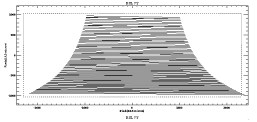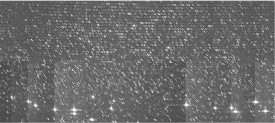 |
Examining and Editing TRES
|

|
TRESPLOT version 1.3.6 was last updated on February 24, 2021What is TRESPLOT?tresplot is a script which allows its user to to evaluate and edit all 51 orders of Echelle spectra from the TRES spectrograph, also automatically replacing known bad regions of the spectra.It invokes the IRAF tres.trsplot task through the IRAF CL and is based on the qplot script which invokes the IRAF rvsao.qplot task rvsao.qplot which in return invokes either rvsao.xcsao or rvsao.emsao, both which use the emplot subroutine to plot the data, optionallly labelling emission and/or absorption lines and/or removing bad sections of data from a list of wavelengths. The same subroutine allows the user to interact with the data. The original version of the TRES Pipeline had a separate IDL correction process which required more steps and was only used on the RV33 order, which is can characterize spectra as well as derive velocities. With tresplot, it is easier to automatically replace known bad pixels as well as more precisely correct narrow emission artifacts caused by cosmic rays or other sources of radiation which add flux to individual pixels on the CCD detectors. Setting up TRESPLOTtresplot uses the same parameters used by tres.trsplot in the user's main IRAF installation, which should have the tres package installed. The user should also become an IRAF user by typing mkiraf in their home directory. Typing tresplot with no arguments gives options. Otherwise, filename and order are required arguments. Click on the options below to see what happens when you use them.> tresplot TRESPLOT: Plot a TRES spectrum usage: tresplot spectrum order [other arguments] tresplot help for IRAF help which defines parameters tresplot dpar to dump parameters tresplot epar to edit parameters tresplot lpar to list parameters tresplot relearn to relearn parameters |
